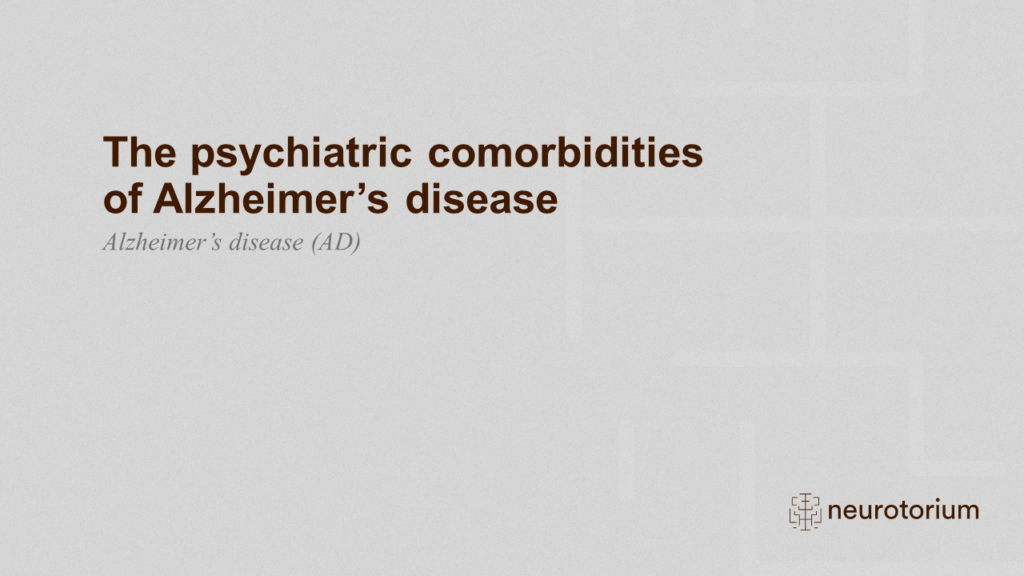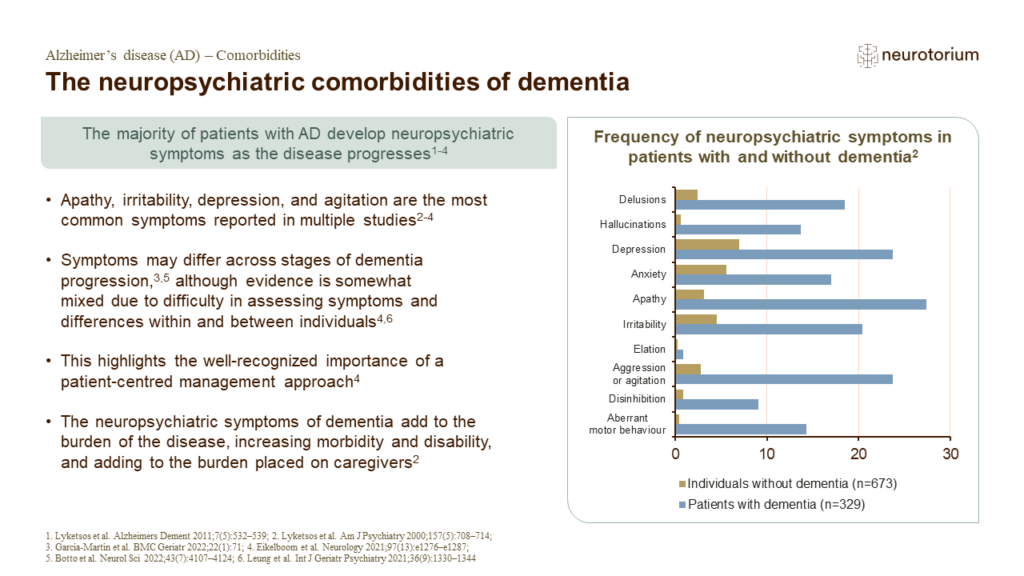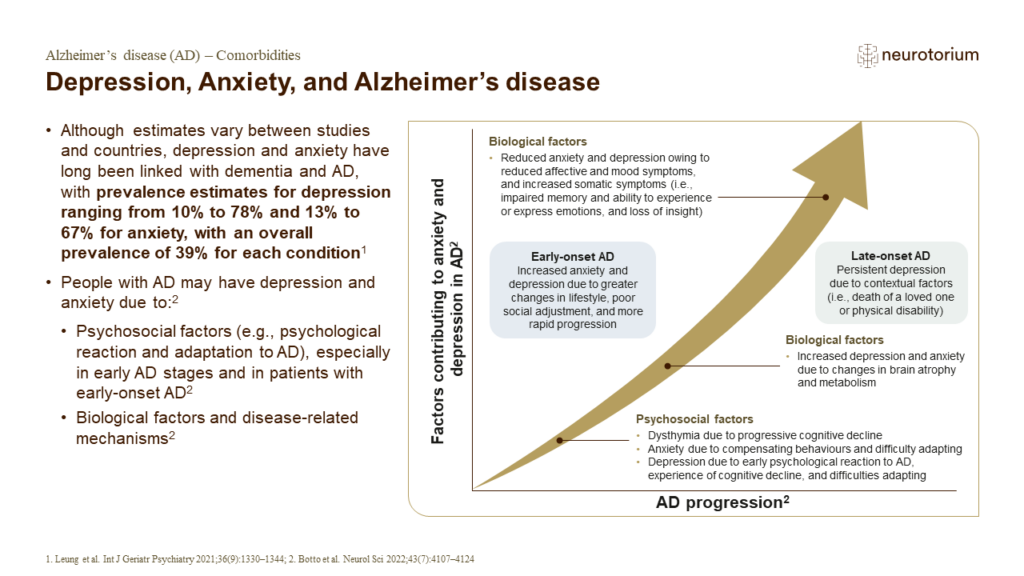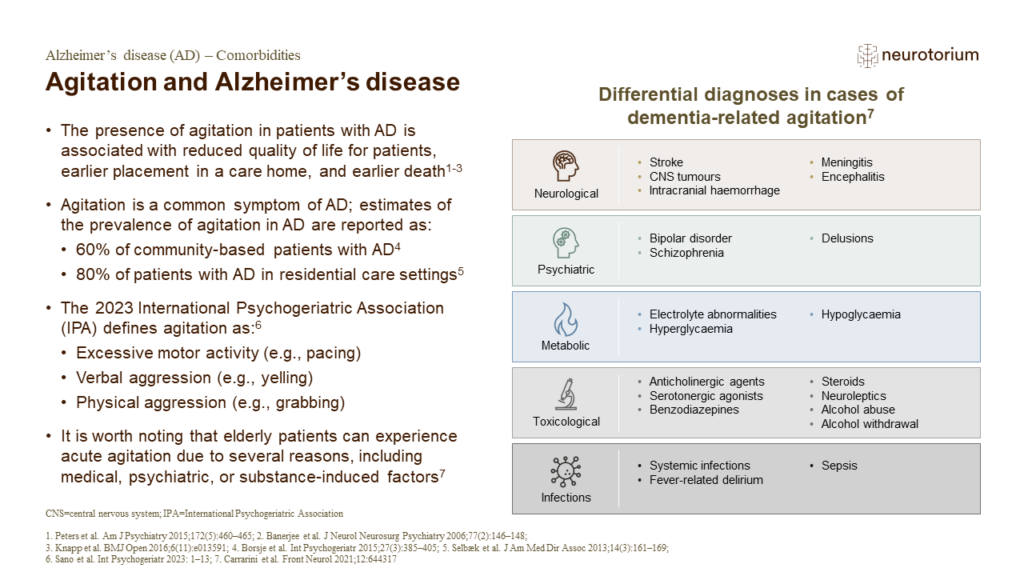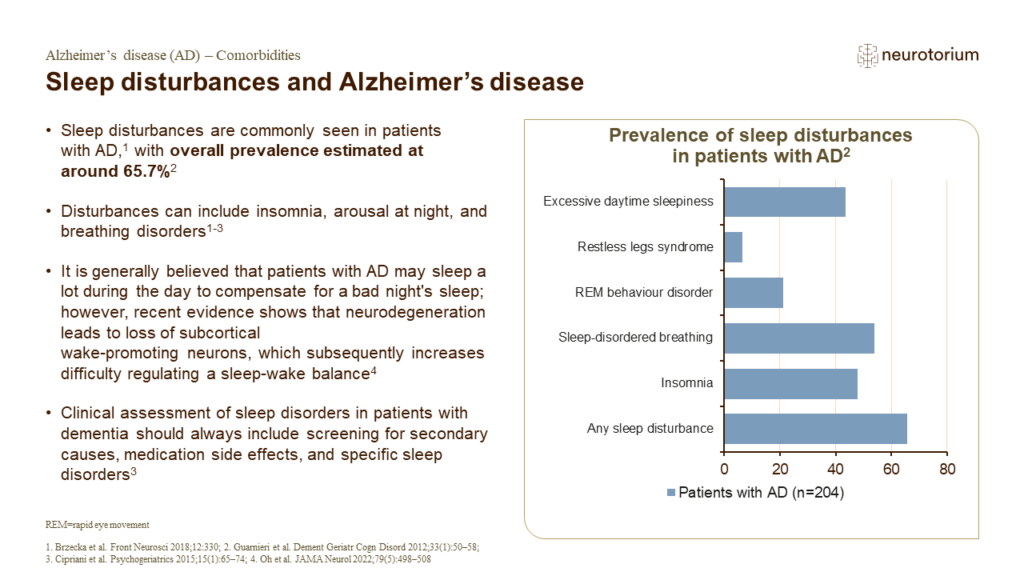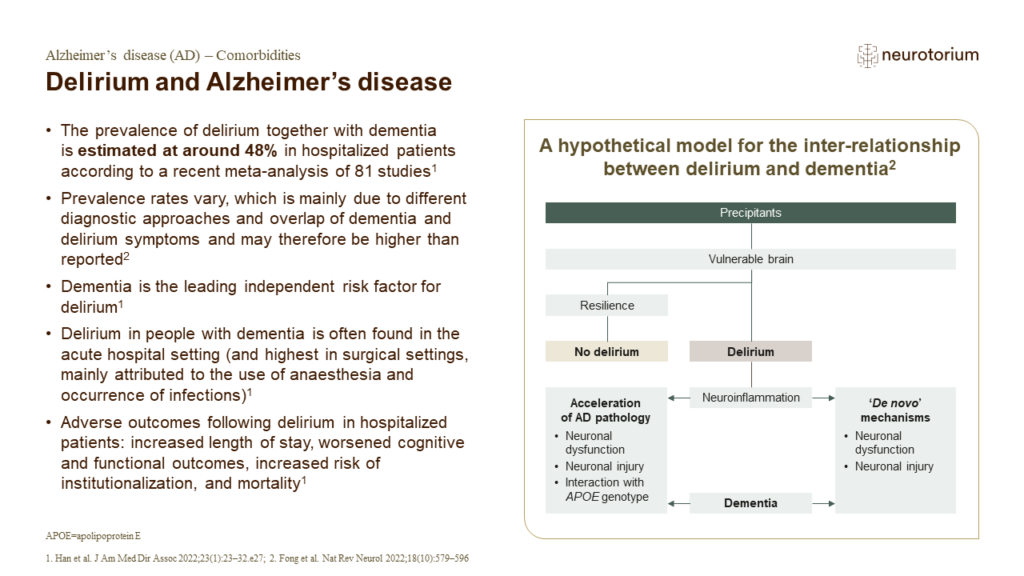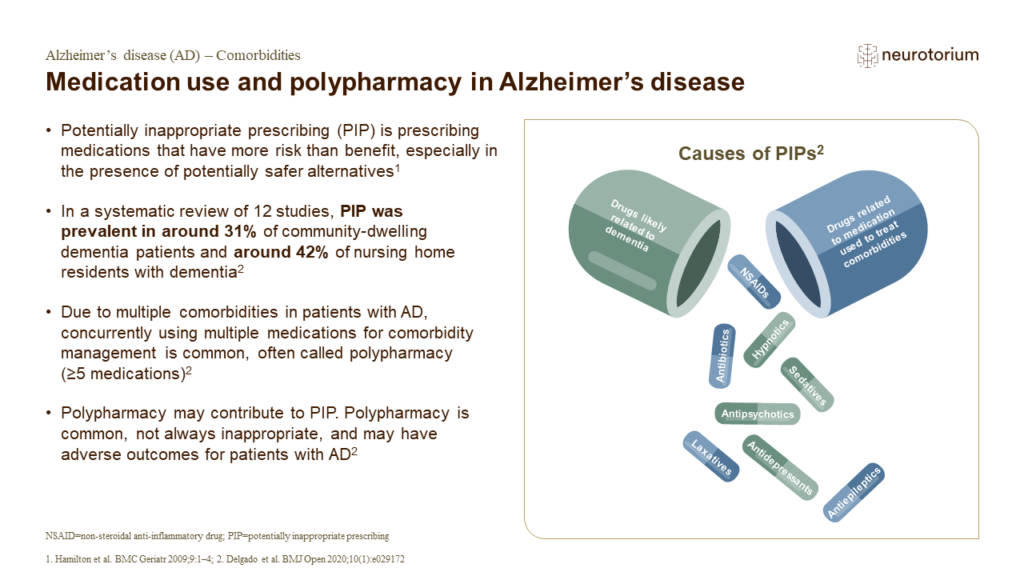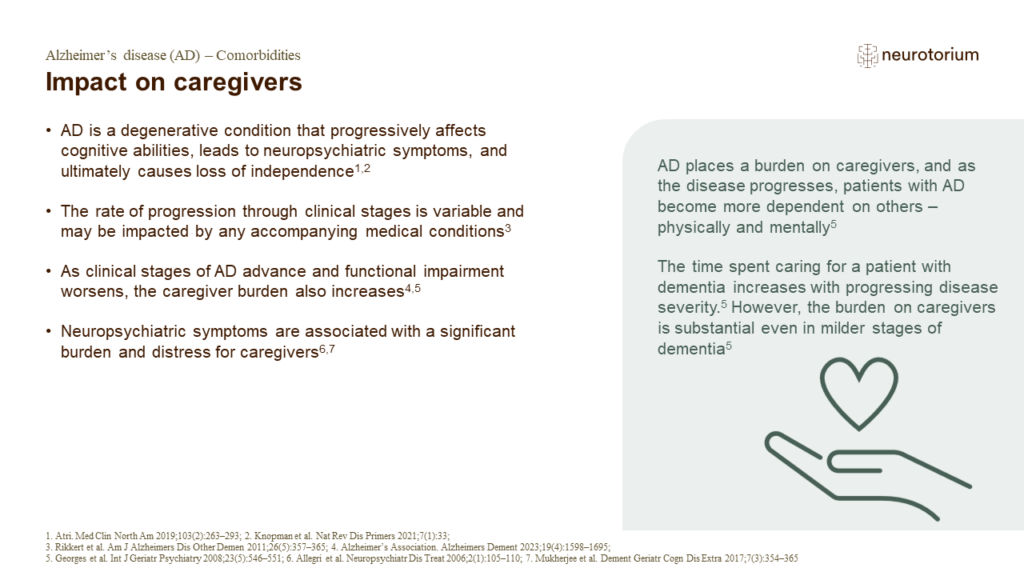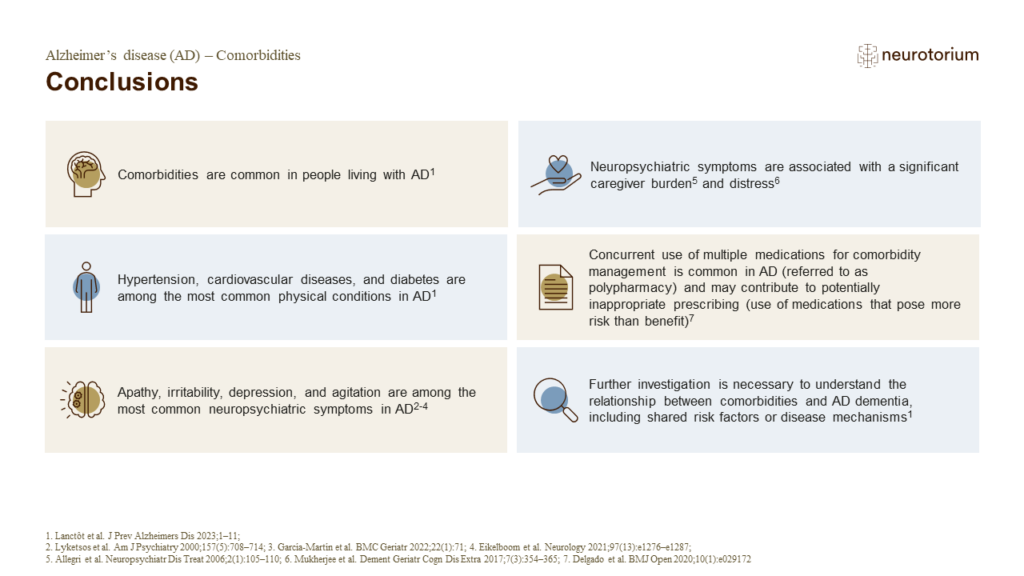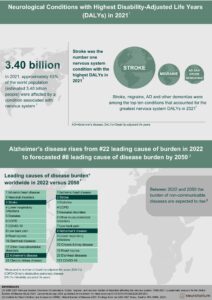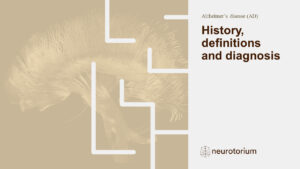Index for
slide deck
Introduction

Comorbidities
Introduction to Alzheimer’s disease comorbidities
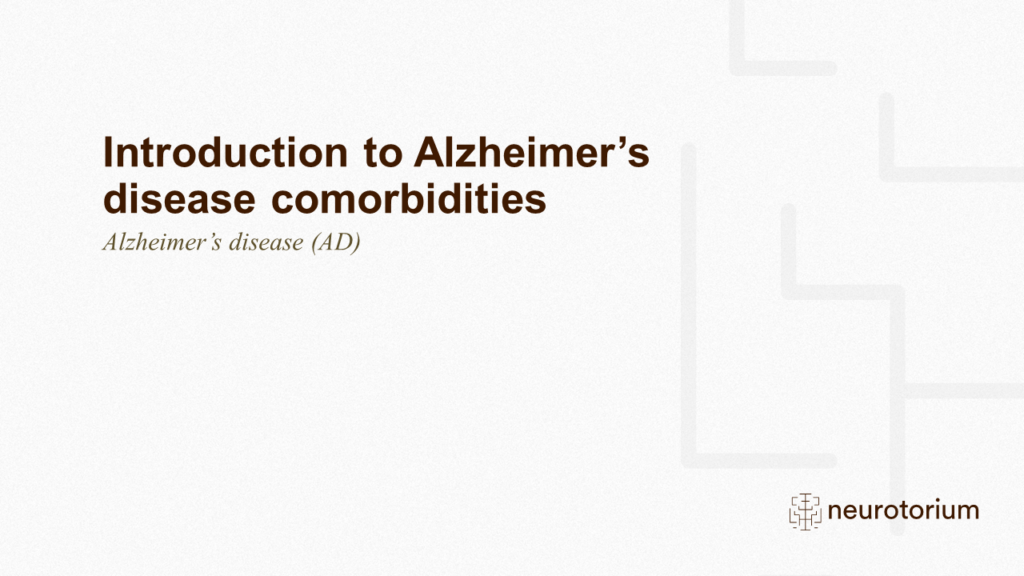
Introduction to Alzheimer’s disease comorbidities
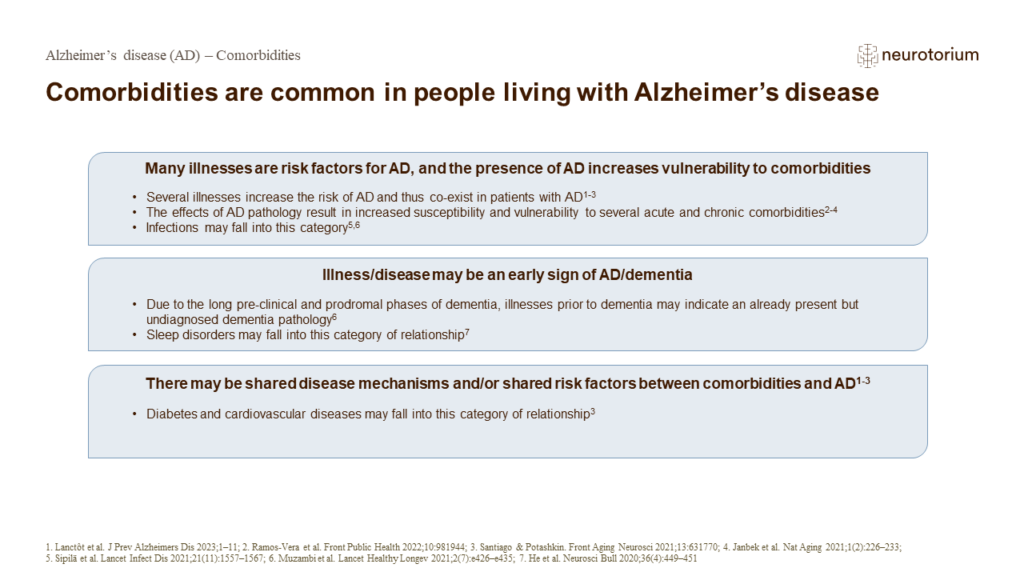
Comorbidities are common in people living with Alzheimer’s disease
Comorbidities are common in people living with AD where chronic comorbidities co-exist, such as diabetes and cardiovascular diseases.1,8-10 Patients with AD are also at risk for the occurrence of acute illnesses, such as infections and fractures.4,11 Apathy, irritability,…
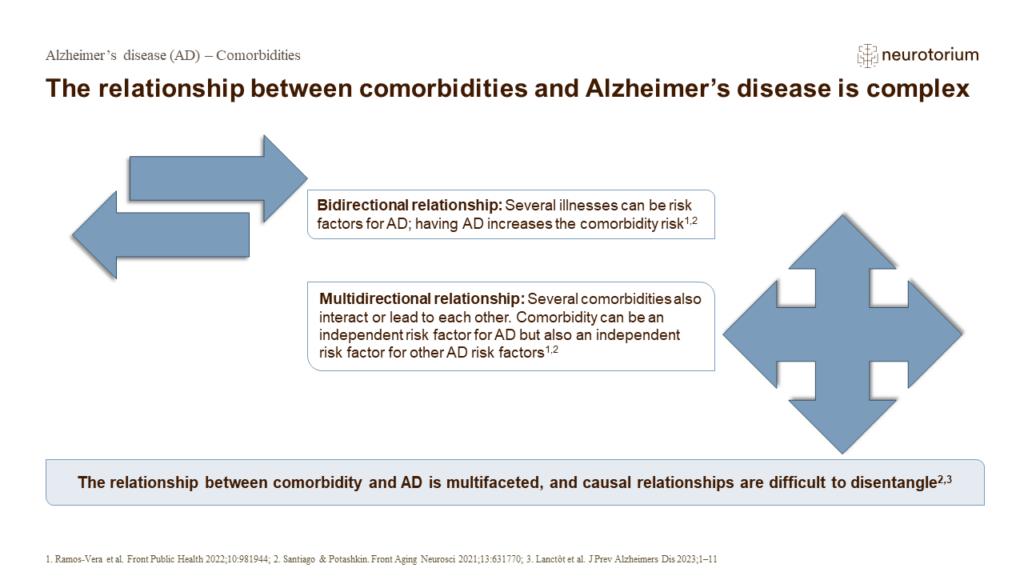
The relationship between comorbidities and Alzheimer’s disease is complex
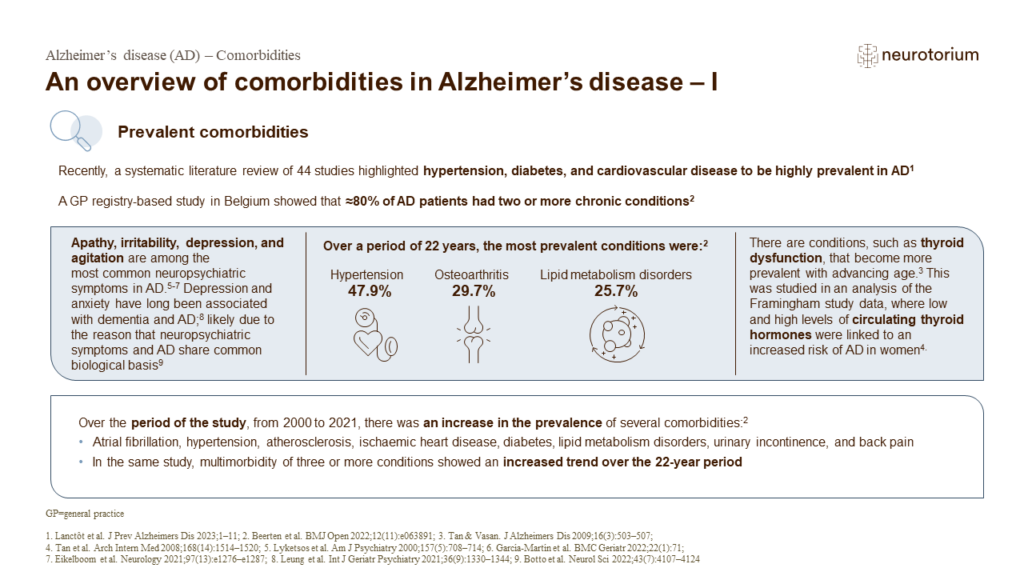
An overview of comorbidities in Alzheimer’s disease – I
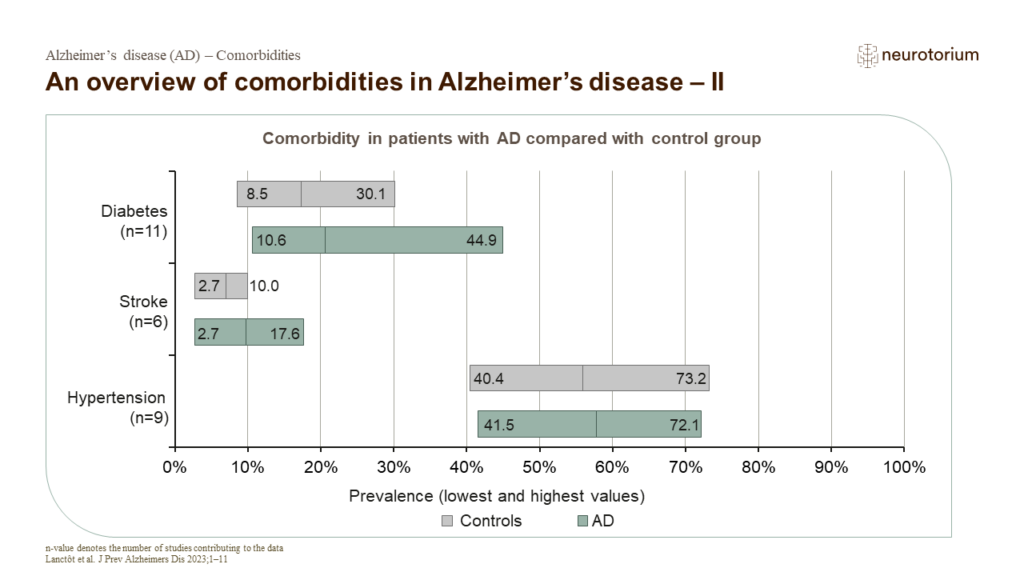
An overview of comorbidities in Alzheimer’s disease – II
Based on findings from a systematic literature review, patients with AD are more likely to have cardiovascular disease, including stroke than individuals without AD.1 In most studies, diabetes was slightly more common in patients with AD compared with controls, or prevale…
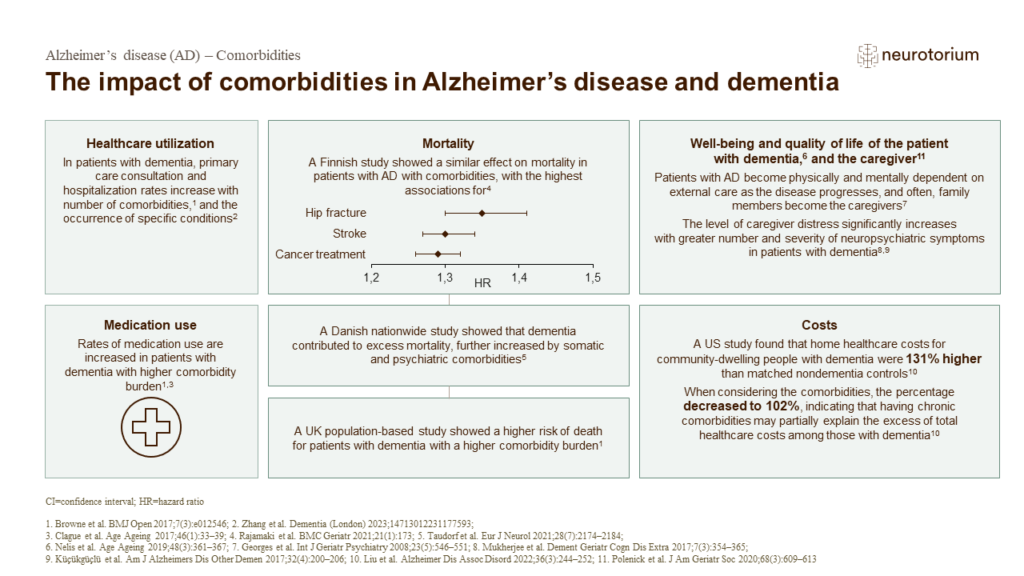
The impact of comorbidities in Alzheimer’s disease and dementia
The physical comorbidities of Alzheimer’s disease
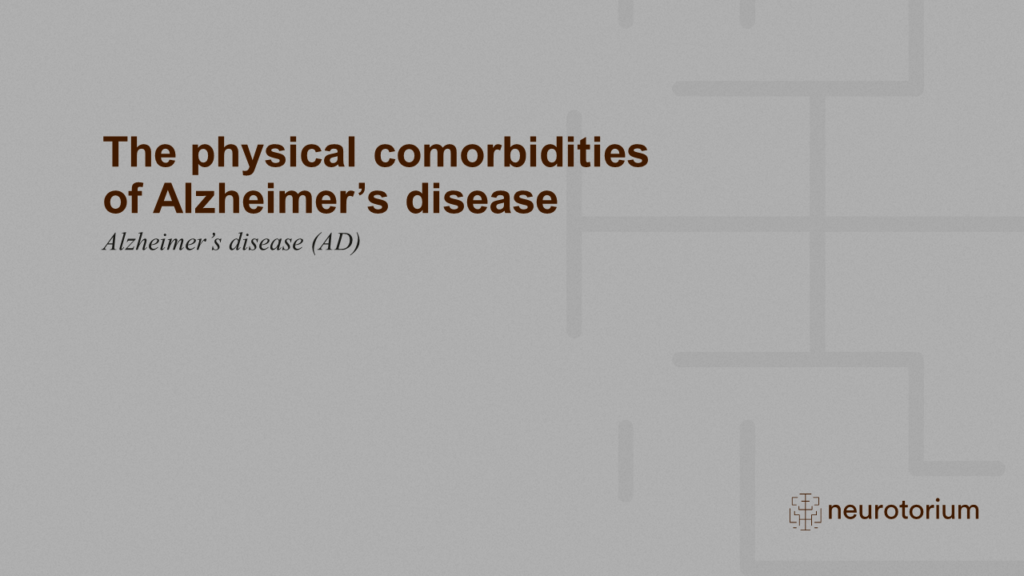
The physical comorbidities of Alzheimer’s disease
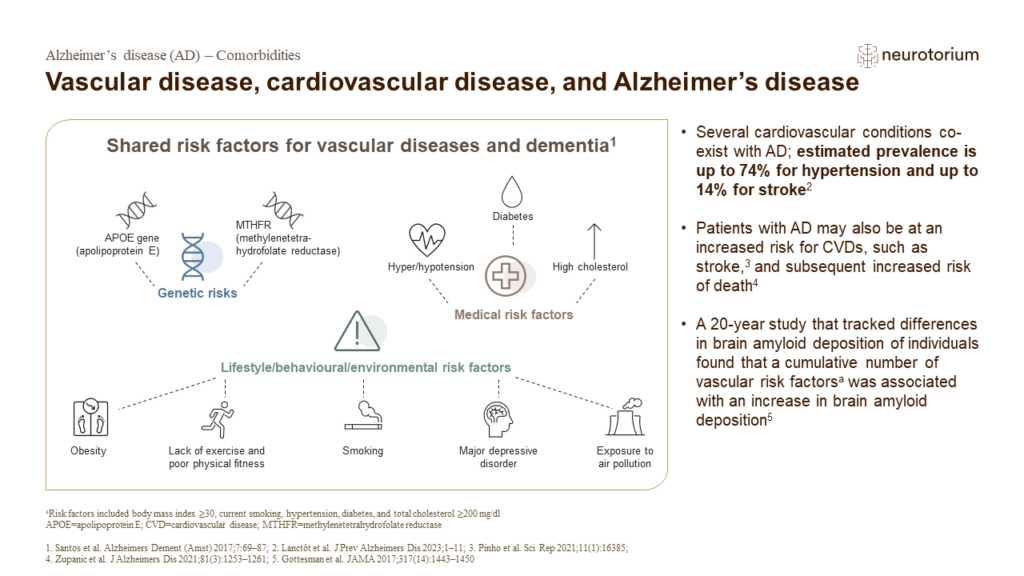
Vascular disease, cardiovascular disease, and Alzheimer’s disease
Several risk factors are associated with AD and cardiovascular disease (CVD).1 From a genetic standpoint, understanding the risk for AD is complex.1 The apolipoprotein (APOE) e4 allele has been identified as a risk factor for both AD and cardiovascular disease.1 Additiona…
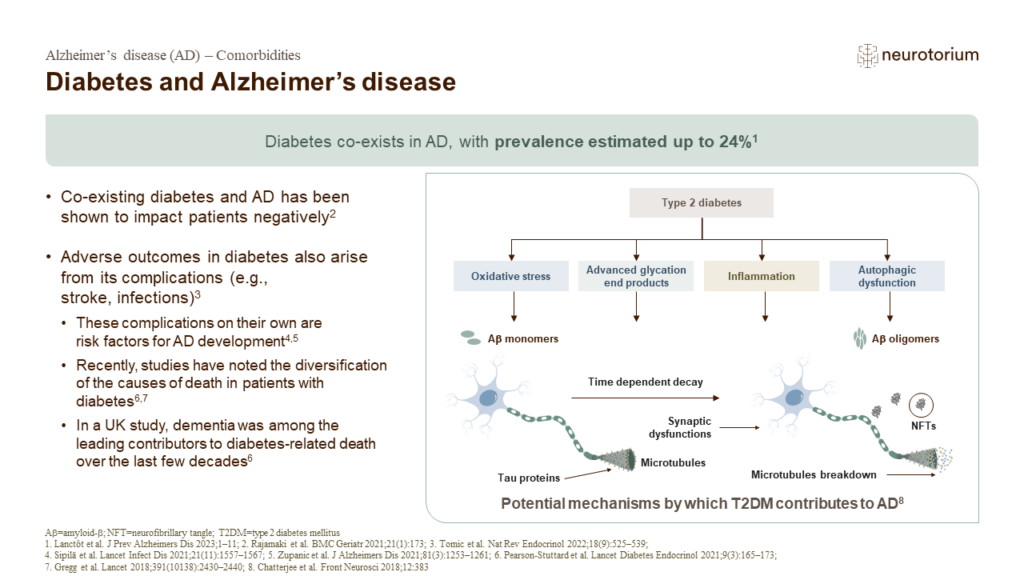
Diabetes and Alzheimer’s disease
Diabetes and AD may share risk factors, including overlapping metabolic risk factors. Apolipoprotein E (APOE) also regulates lipid metabolism.9 This suggests that the aetiology of AD includes metabolic risk factors, which are also involved in the development of diabetes.1…
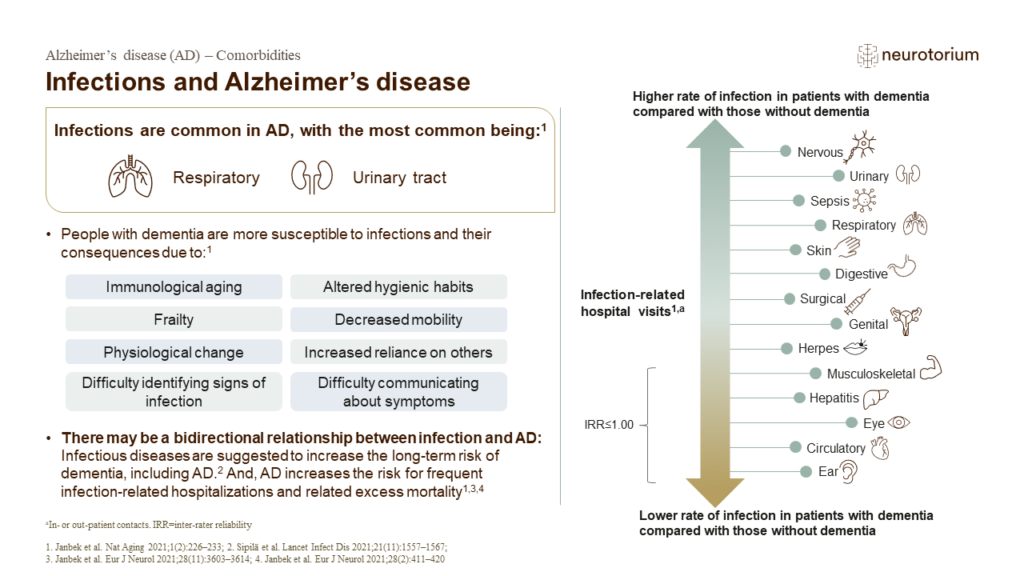
Infections and Alzheimer’s disease
Infectious diseases are suggested to increase the long-term risk of dementia, including AD.2 This is supported by research of hospital-treated infections, with evidence that infections occurring more than 10 years before the onset of dementia may also be associated with e…
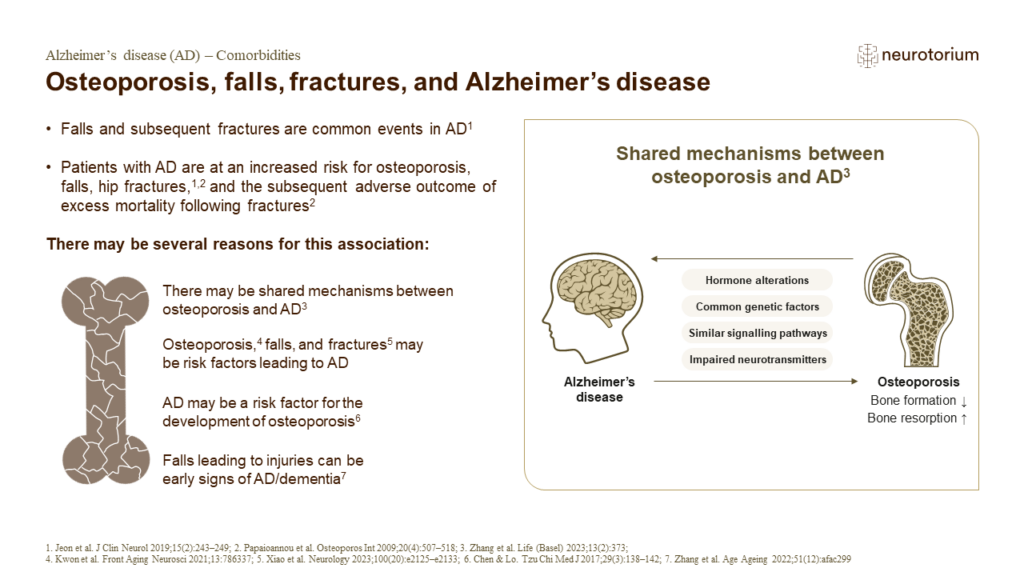
Osteoporosis, falls, fractures, and Alzheimer’s disease
Osteoporosis is defined as a skeletal disorder with compromised bone strength that increases the risk of fracture.6 Although osteoporosis and AD are two distinct diseases, several risk factors are shared between them, such as alcohol consumption and smoking.8,9 The associ…
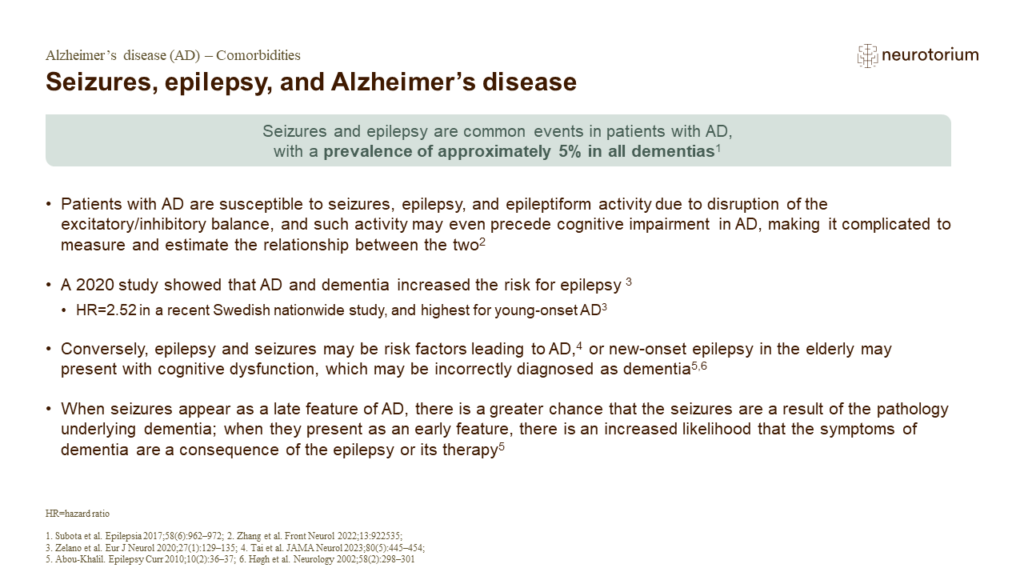
Seizures, epilepsy, and Alzheimer’s disease
AD and epilepsy in older adults are common diseases of the nervous system, with incidence rates increasing with age.2 Several studies have investigated the shared pathology and clinical relevance of AD and epilepsy.7-9 Additionally, the key pathology of AD – amyloid b (Ab…


